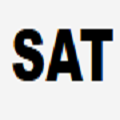A famous result by Erd\H{o}s and Szekeres (1935) asserts that, for all $k,d \in \mathbb{N}$, there is a smallest integer $n = g^{(d)}(k)$ such that every set of at least $n$ points in $\mathbb{R}^d$ in general position contains a $k$-gon, that is, a subset of $k$ points which is in convex position. In this article, we present a SAT model based on acyclic chirotopes (oriented matroids) to investigate Erd\H{o}s--Szekeres numbers in small dimensions. To solve the SAT instances we use modern SAT solvers and all our unsatisfiability results are verified using DRAT certificates. We show $g^{(3)}(7) = 13$, $g^{(4)}(8) \le 13$, and $g^{(5)}(9) \le 13$, which are the first improvements for decades. For the setting of $k$-holes (i.e., $k$-gons with no other points in the convex hull), where $h^{(d)}(k)$ denotes the minimum number $n$ such that every set of at least $n$ points in $\mathbb{R}^d$ in general position contains a $k$-hole, we show $h^{(3)}(7) \le 14$, $h^{(4)}(8) \le 13$, and $h^{(5)}(9) \le 13$. Moreover, all obtained bounds are sharp in the setting of acyclic chirotopes and we conjecture them to be sharp also in the original setting of point sets. As a byproduct, we verify previously known bounds. In particular, we present the first computer-assisted proof of the upper bound $h^{(2)}(6)\le g^{(2)}(9) \le 1717$ by Gerken (2008).
翻译:Erd\H{o}和Szekeres(1935年)的著名结果显示,对于所有美元、美元和美元(mathbb{N}美元),有一个最小整数美元=g ⁇ (d)}(k)美元,这样每套至少一美元点($mathbb}R ⁇ d美元)就包含一个美元-gon,也就是说,一组美元点($k美元),位于正方位。在这个文章中,我们展示了一个基于周期性黑皮托(面向类固醇)的SAT模型($美元),以调查小维的Erd\H{o}Szekers数字。为了解决每套至少一美元点($),我们使用现代SAT解答器和我们所有的不满意度结果都使用DRAT证书来验证。我们展示的是,(7)美元分数($),13美元(美元) 立于正值(美元),所有 ⁇ (5)}我们展示的是13美元,我们13美元(美元)的正值(美元)是首次改进。



